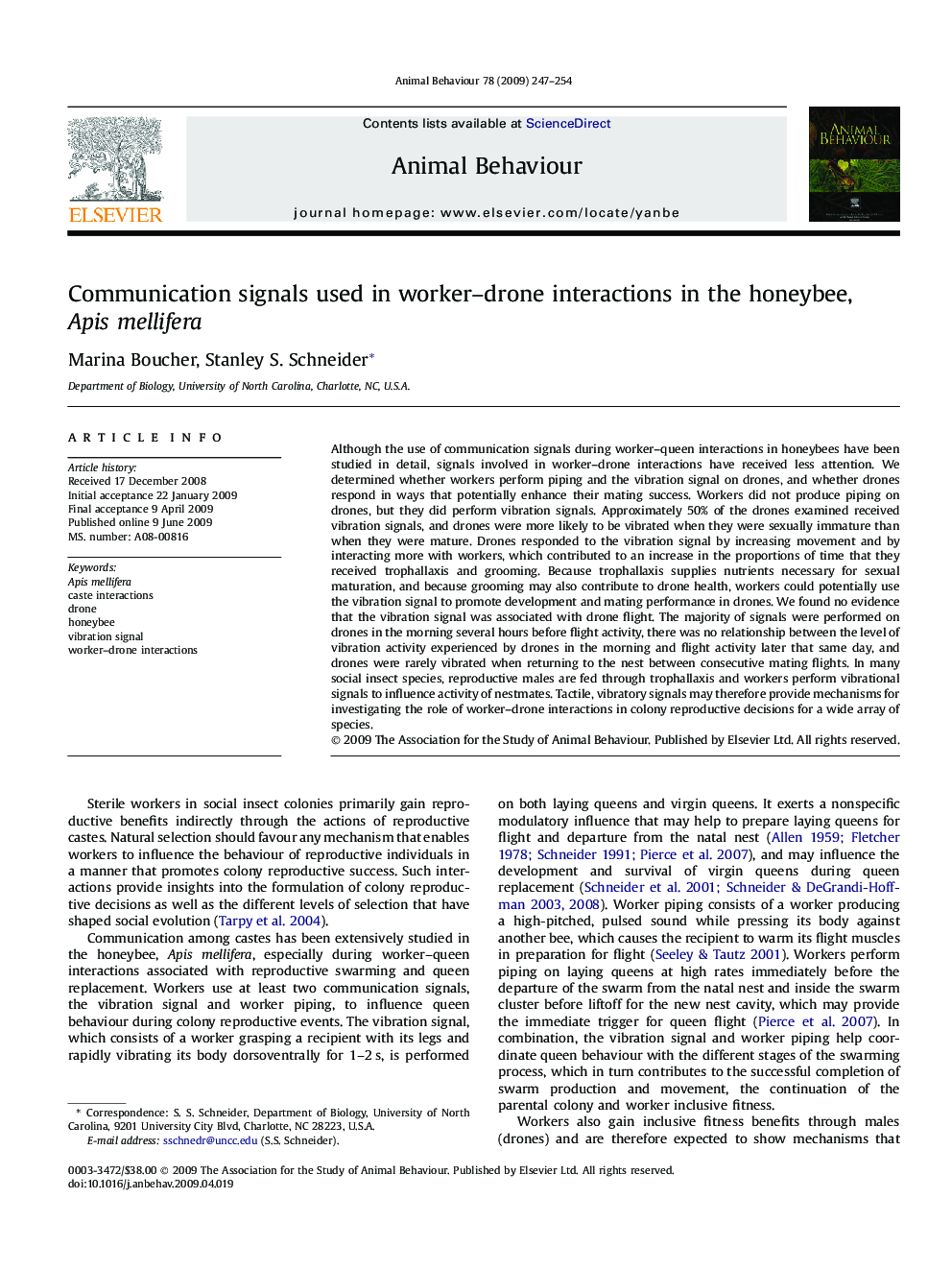| کد مقاله | کد نشریه | سال انتشار | مقاله انگلیسی | نسخه تمام متن |
|---|---|---|---|---|
| 2417422 | 1104319 | 2009 | 8 صفحه PDF | دانلود رایگان |

Although the use of communication signals during worker–queen interactions in honeybees have been studied in detail, signals involved in worker–drone interactions have received less attention. We determined whether workers perform piping and the vibration signal on drones, and whether drones respond in ways that potentially enhance their mating success. Workers did not produce piping on drones, but they did perform vibration signals. Approximately 50% of the drones examined received vibration signals, and drones were more likely to be vibrated when they were sexually immature than when they were mature. Drones responded to the vibration signal by increasing movement and by interacting more with workers, which contributed to an increase in the proportions of time that they received trophallaxis and grooming. Because trophallaxis supplies nutrients necessary for sexual maturation, and because grooming may also contribute to drone health, workers could potentially use the vibration signal to promote development and mating performance in drones. We found no evidence that the vibration signal was associated with drone flight. The majority of signals were performed on drones in the morning several hours before flight activity, there was no relationship between the level of vibration activity experienced by drones in the morning and flight activity later that same day, and drones were rarely vibrated when returning to the nest between consecutive mating flights. In many social insect species, reproductive males are fed through trophallaxis and workers perform vibrational signals to influence activity of nestmates. Tactile, vibratory signals may therefore provide mechanisms for investigating the role of worker–drone interactions in colony reproductive decisions for a wide array of species.
Journal: Animal Behaviour - Volume 78, Issue 2, August 2009, Pages 247–254